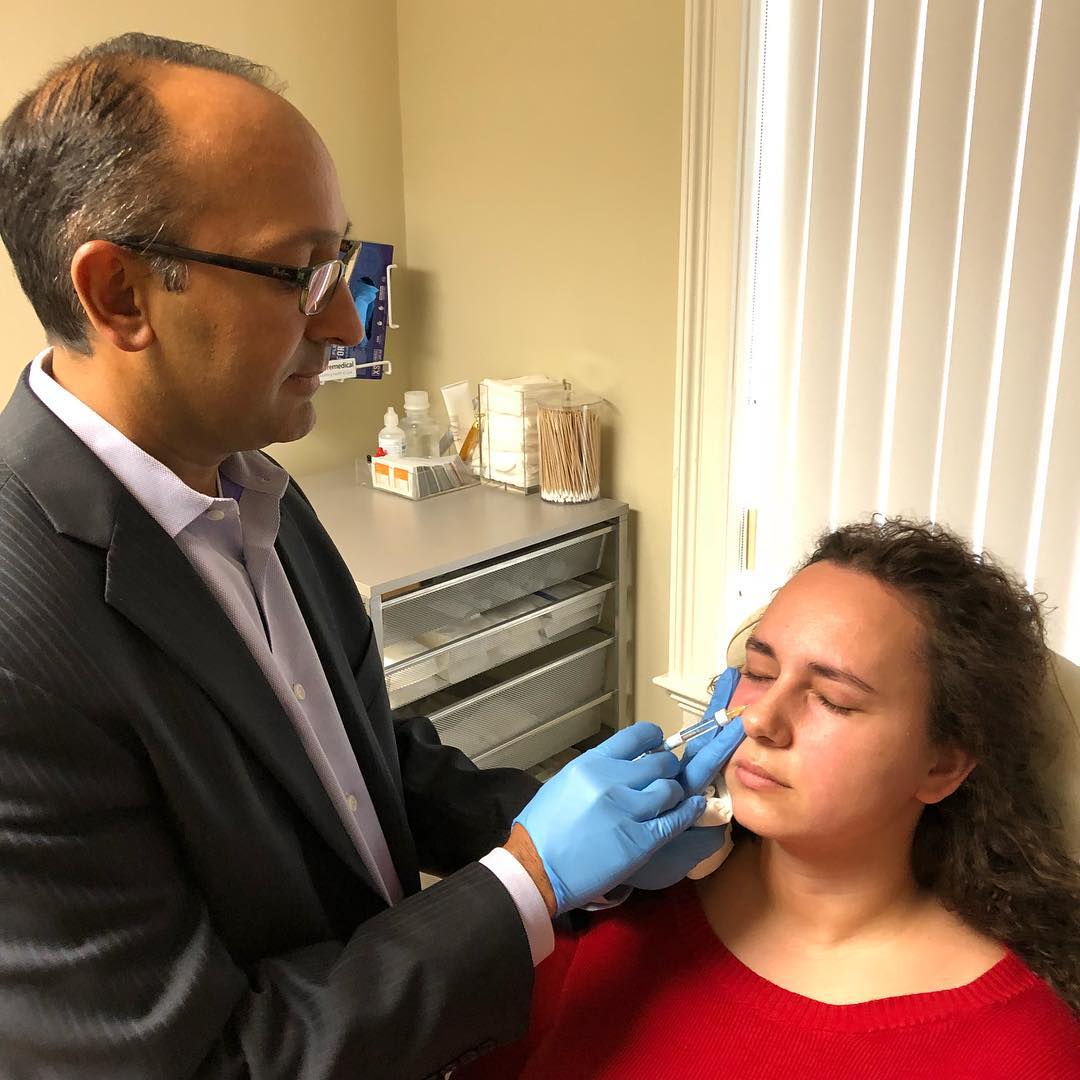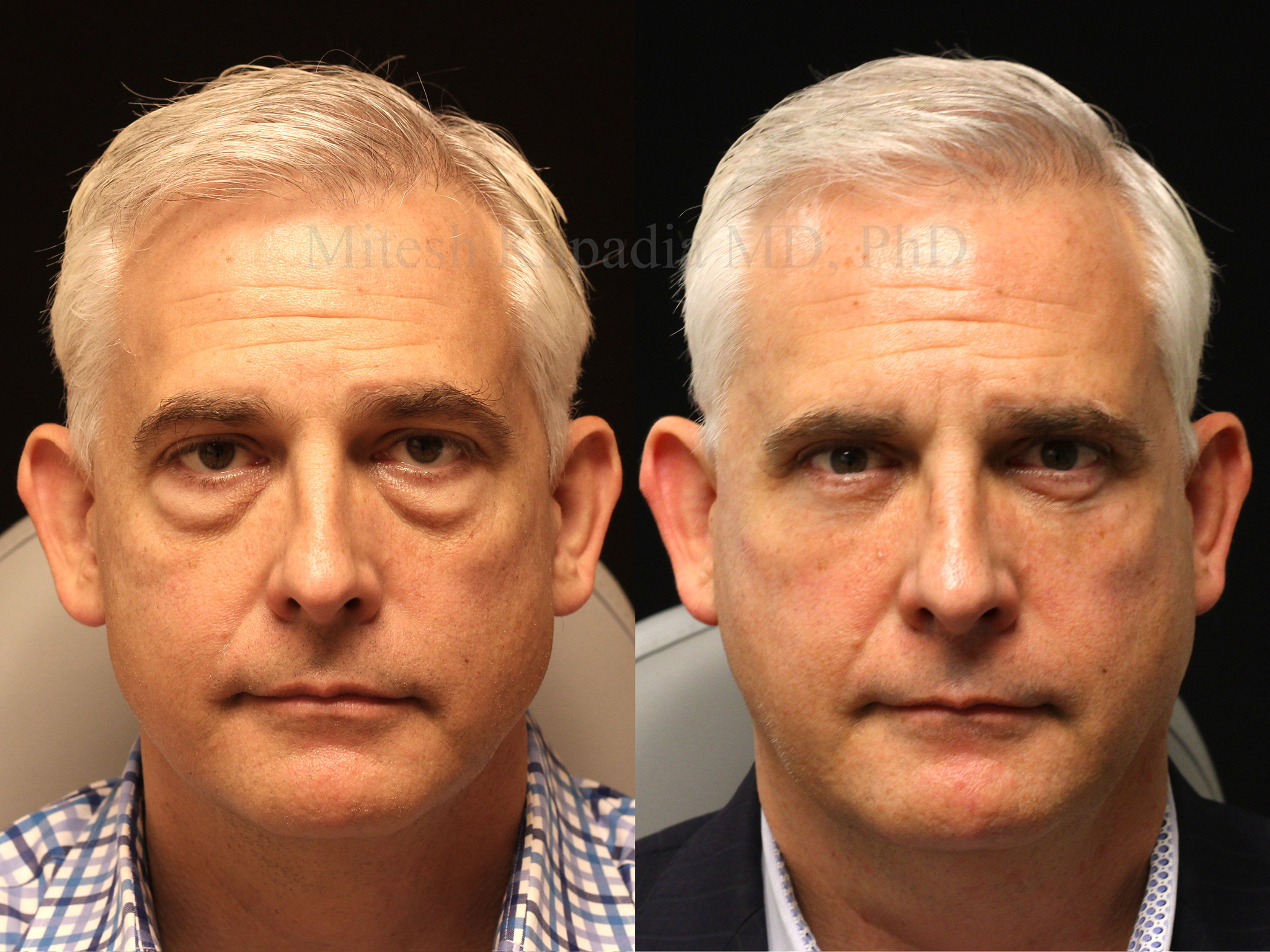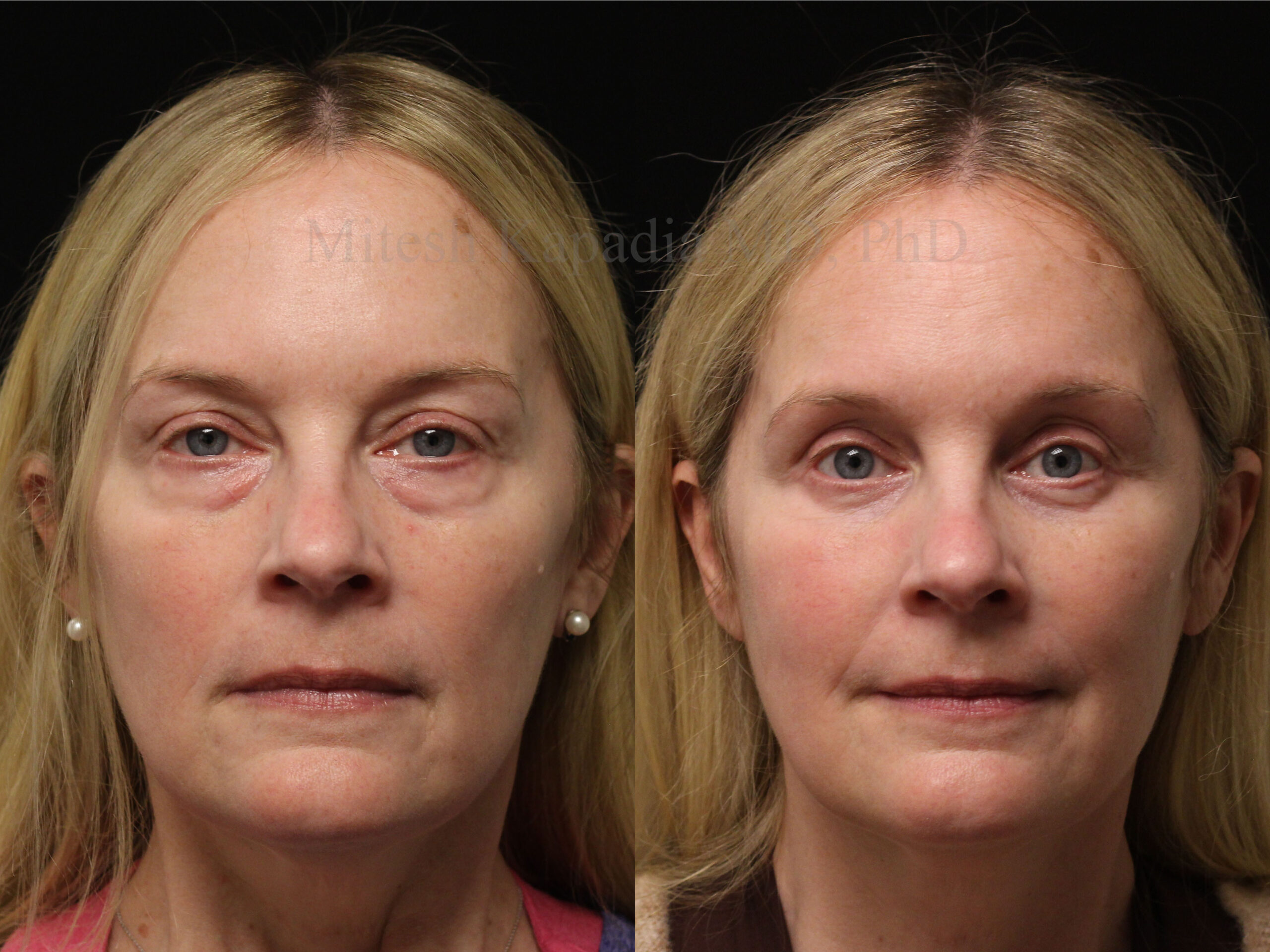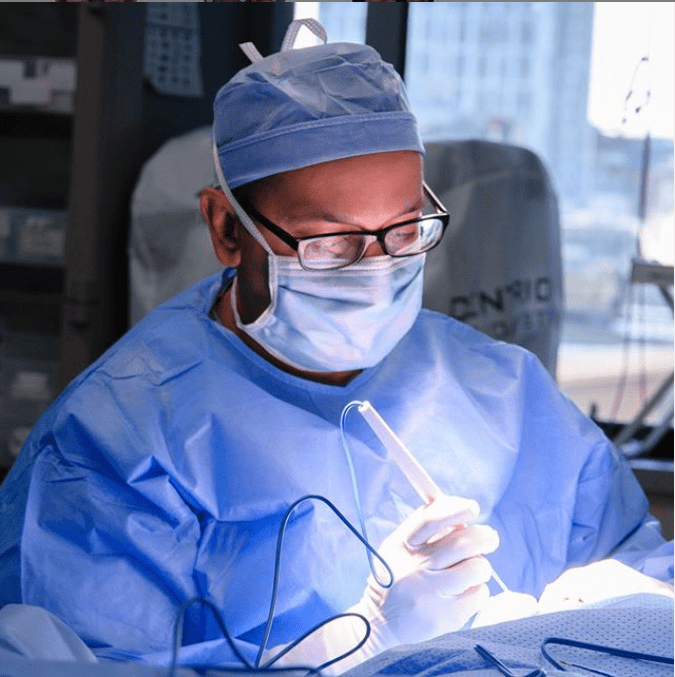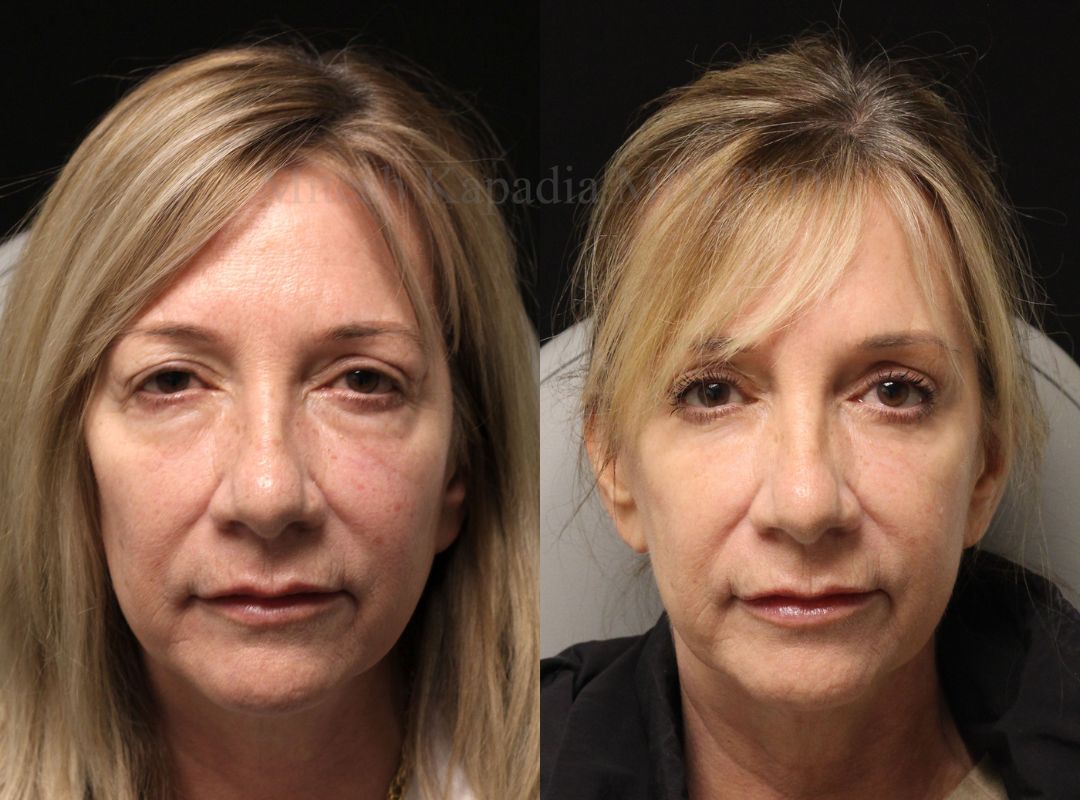Author
Mikayla Vosseller
Share
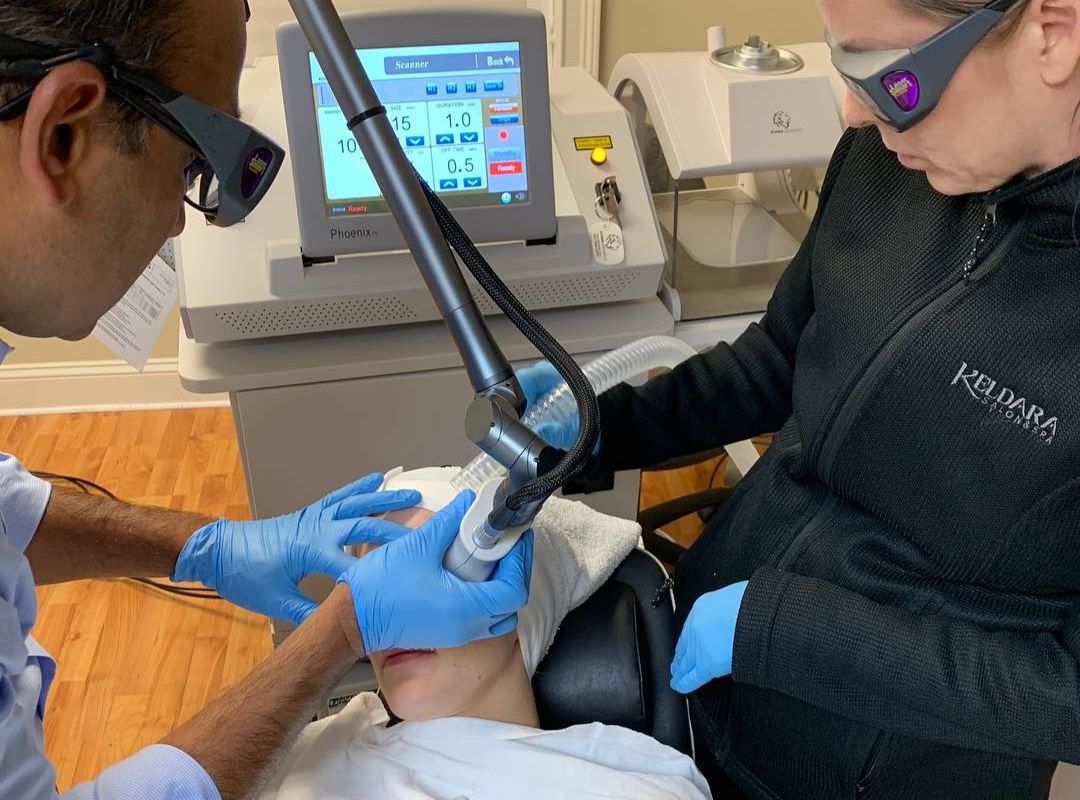
Erbium and Fractional CO2 Laser – Before and After treatment
Before treatment
Indications & Contraindications
The erbium and CO2 lasers are used for skin resurfacing. The laser works by delivering energy to vaporize small columns of tissue. As new skin grows back in the vaporized areas, patients often note an improvement in skin texture, wrinkles and/or dyschromia (brown or red spots). Two-three laser treatments may be needed to optimize the results.
Please let Dr. Kapadia know if you any of the following apply to you:
- Conditions which may predispose to poor wound healing including diabetes mellitus, connective tissue disease, circulatory disorders or radiation/ chemotherapy.
- Pregnant patients should not receive treatment.
- Patients who have tanned within the last 30 days.
- Use of Isotretinoin (Accutane) within the past 12-18 months.
- History of hypertrophic scarring or keloid formations.
- Epilepsy, heart disease or having a pacemaker.
- Use of glycolic acid products, retinols or treinoin (Retin A) – these should be discontinued at least one week prior to the procedure
- Use of medications which thin your blood including aspirin (even baby aspirin), Motrin, ibuprofen, naproxen, Aleve, Vitamin E or herbal medicines such as Gingko Baloba. Tylenol is okay to use.
- Use of doxycycline or minocycline as these can increase skin sensitivity
Pre-Treatment Considerations & Preparations
At the time of your consultation, Dr. Kapadia will examine the areas intended for treatment and explain to the patient the treatment procedure, expected results, and the possibility of potential side effects. It is important to avoid direct sun exposure and wear daily sunscreen containing zinc oxide or titanium oxide for four weeks prior to the procedure. All patients will have “raw” skin after the procedure, often with pinpoint areas of bleeding. This is from disruption of the epidermis layer of the skin and may take up to 7-10 days to resolve. Strict adherence to the wound care regimen described below is essential to the healing process. The skin is often red for 4-6 weeks after the procedure but mineral based makeup can be worn after the skin has fully epithelialized (usually 5-7 days for a typical fractional CO2 laser treatment or 3-4 days for an erbium laser treatment). Most patients will feel comfortable returning to work and/or social engagements about 10 days after a CO2 laser treatment or 5-7 days after an erbium laser treatment. Everyone is different and the time it takes you to heal may be faster or slower than another patient. Dr. Kapadia encourages patients to watch YouTube videos on “fractional CO2 laser” so you are prepared for what you will look like after the procedure. The most common side effects of the laser are prolonged redness or dark patches on the skin (most common in darker skin patients). Less common or rare side effects include hypopigmentation (whitening) of the skin, scarring or infections.
What you will need to buy before the procedure
- Gauze pads – 4×4 size, preferably non-woven, available at any pharmacy
- White vinegar (for vinegar soaks after the procedure)
- Plastic container to store vinegar-soaked gauze
- Prescriptions provided by Dr. Kapadia
- Large tub of Aquafor ointment
- Ice packs – wet towels in ziploc bags or frozen peas work fine
- Spray bottle with distilled water – helpful to mist your face for comfort
- Hydrocortisone 1% – to have in case there is severe itching
- Benadryl – helpful if there is severe itching
- Tylenol – for pain
- Genteal gel (or other lubricant eye drops) – for use as needed for dry eyes
- Cetaphil cleanser
- Cetaphil moisturizer
- Mineral makeup (for healing phase, best to obtain this prior to the procedure)
- Suncreen (zinc oxide or titanium oxide, SPF 30+)
The Treatment Procedure
Make sure to eat breakfast and/or lunch on the day of the procedure. Arrive at the office one hour before your procedure as directed. You should not wear any makeup that day. After the paperwork is completed, a numbing cream will be placed on your skin to help reduce discomfort. The actual procedure will take approximately 30-60 mins to complete. You will need someone to drive you home after the procedure.
After Treatment
General Instructions:
- Stay hydrated, eat healthy foods and avoid alcohol
- Always wash hands before touching treated skin
- Avoid exercise for at least seven days after the procedure
- A sunburn-type sensation normally lasts from several hours to one day – use ice packs, vinegar soaks and mist of distilled water from a spray bottle to help with this sensation
- Sleep as upright as possible in a chair or with at least with several pillows for the first two nights to decrease swelling. Line your pillow with paper towels as you will have some bleeding during this time.
- Avoid harsh skin products for at least six weeks after the procedure as your skin will be extra sensitive during this time
- Tylenol can be used as needed for pain. Ibuprofen or motrin can increase bleeding but can also be used if needed.
- Use dry eye drops (e.g. Genteal gel) as needed for eye dryness
- Always wash hands before touching treated skin
Vinegar Soaks
- Make a vinegar solution of 1 teaspoon white vinegar in two cups of water. Soak gauze pads in this solution and store in a plastic container. Many patients prefer to keep this in the refrigerator as it is more soothing when cold.
- The vinegar soaks help clean the skin and reduce bacterial and fungal elements
Open wound phase – day of treatment until epithelialization is complete (4-7 days):
- When you leave the office, your skin will be an open wound. An occlusive ointment (such as Aquafor) will be applied before you leave the office and will need to be reapplied frequently. This helps protect your skin while the surface heals. Your face should always be covered with ointment until epithelialization is complete.
- Apply cold compresses (ice pack, frozen peas or wet paper towels frozen in A Ziploc bag) for comfort. Do not apply ice directly to skin and beware of detergents used to wash your towels, as these may irritate the skin. The cold compress should feel good – if it hurts then it is too cold. Paper towels are okay to use.
- Clean your skin only with the vinegar soaks. Apply the vinegar soaked gauze dripping wet for 10-15 minutes over the treated area. Avoid excessive rubbing. Reapply Aquafor ointment after the gauze is removed. Vinegar soaks should be done at least 6x/day.
- Itching can be treated with oral Benadryl. If severe, 1% hydrocortisone can be used up to 2x/day. Itching often starts the day after the procedure (day 1) and is much better by day 4. Do not scratch your skin as this can lead to scarring! Vinegar soaks will help.
- You can shower and wash your hair starting the day after the procedure taking care to keep shampoo away from your face.
After Epithelialization
- The skin will re-epithelialize within 3-4 days after an erbium laser treatment and 5-7 days after a CO2 laser treatment.. You will know this process is complete when there are no more “raw” areas of skin and the heavy peeling is complete. There will likely be some persistent redness.
- Discontinue the vinegar soaks and Aquafor ointment.
- Wash the skin twice a day with a gentle cleanser such as Cetaphil followed by a gentle moisturizer.
- Apply a sunscreen containing zinc oxide or titanium oxide daily for at least 4 weeks (after the moisturizer has absorbed). Your skin will be very sensitive to sun for several months after the procedure. Wear a hat if you go outside and avoid prolonged sun exposure.
- Use of mineral based makeup is now okay. Avoid liquid foundation as this may clog pores.
Call the office if you notice:
- Blistering or scabbing of the skin.
- Acne outbreak or outbreak of tiny cysts.
- Significant pain on day 2 or later, or severe pain at any time.
Do not hesitate to call the office at any time if you are concerned or have a question.
Dr. Kapadia is reachable by phone at his office during regular business hours. 978-393-5437 After hours, call the Tufts Medical Center page operator and ask to have Dr. Kapadia or the covering doctor paged 617-636-5114. Routine, non-urgent questions can be sent by email to doctorkapadia@gmail.com.

